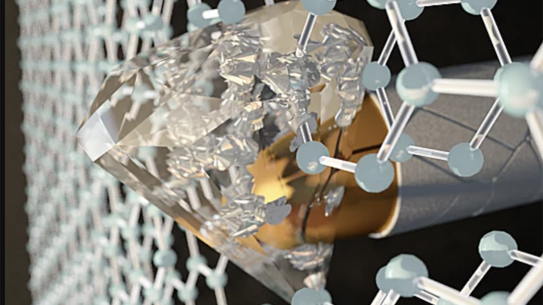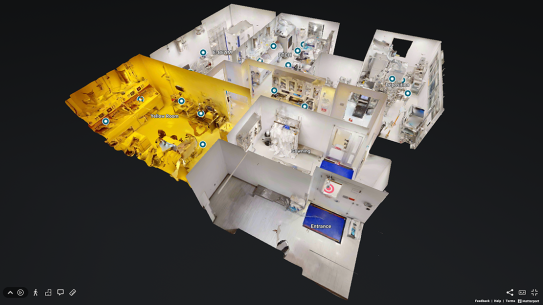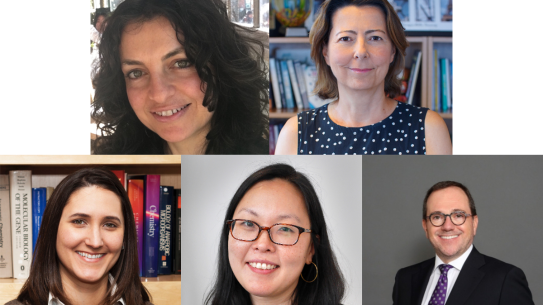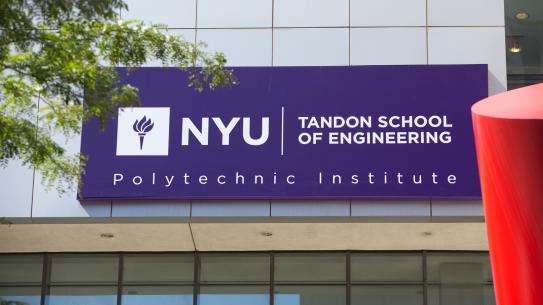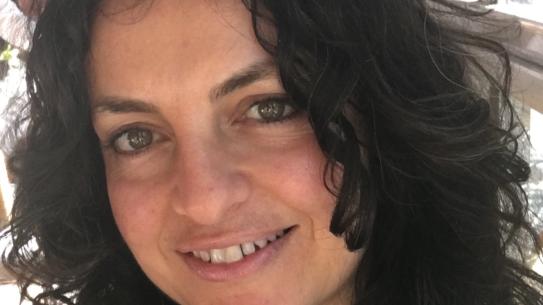Elisa Riedo
-
Herman F. Mark Professor in Chemical and Biomolecular Engineering
-
Professor of Physics at NYU’s College of Arts and Science
-
Director, Faculty Development

Elisa Riedo is Professor of Chemical and Biomolecular Engineering at New York University Tandon School of Engineering. She is also Professor of Physics at NYU College of Arts and Science and affiliated Professor of Mechanical Engineering. Previously, Riedo was Professor of Physics at the Georgia Institute of Technology from 2003 to 2015. She graduated summa cum laude in Physics at the University of Milano, and obtained a Ph.D. in Physics in 2000 with a joint thesis between the University of Milano, and the European Synchrotron Research Facility (ESRF) in Grenoble, France. She then worked as postdoctoral fellow at the Ecole Polytechnic Federale de Lausanne (EPFL) in Switzerland. She is particularly well known for her pioneering work in thermal scanning probe lithography (tSPL), a novel and sustainable nanofabrication technique with applications in biomedicine, nanoelectronics, and magnetic materials. She has also made fundamental contributions in nanomechanics, graphene, diamene, 2D materials, and nano-confined water. She is widely published, and has received multiple grants from the National Science Foundation, the Department of Energy, and the Department of Defense. She is a Fellow of the American Physical Society.
Education
University of Milano, Italy 2000
Ph.D., Physics
University of Milano, Italy 1995
B.S., Physics
Information for Mentees
Mentoring Style: Informal, open discussions, sense of humor, like mixing work and good food
My Science: Nanoelectronics, NanoBioTechnology, Nanomechanics
Publications
Selected Publications:
“Cost and Time Effective Lithography of Reusable Millimeter Size Bone Tissue Replicas With Sub‐15 nm Feature Size on A Biocompatible Polymer”, Advanced Functional Materials (2021) https://doi.org/10.1002/adfm.202008662. (Cover Article)
“Pressure-induced formation and mechanical properties of 2D diamond boron nitride”, Advanced Science (2021) 8, 2002541, https://doi.org/10.1002/advs.202002541. (Cover Article)
“Nanofabrication of graphene field-effect transistors by thermal scanning probe lithography”, Applied Physics Letters Materials (2021) 9 (1), 011107 https://doi.org/10.1063/5.0026159
“Spatial Defects Nanoengineering for Bipolar Conductivity in MoS2”, Nature Communications (2020) https://www.nature.com/articles/s41467-020-17241-1
”Patterning metal contacts on monolayer MoS2 with vanishing Schottky barrier using thermal nanolithography”, Nature Electronics 17–25 (2019) https://doi.org/10.1038/s41928-018-0191-0
“Ultra-hard carbon film from epitaxial two-layer graphene” Nature Nanotechnology 13, (2018), doi:10.1038/s41565-017-0023-9
“Nanopatterning reconfigurable magnetic landscapes via thermally assisted scanning probe lithography” Nature Nanotechnology, 11, 545–551 (2016) (Cover article)
“Elastic coupling between layers in two-dimensional materials”, Nature Materials 14, 714–721 (2015)
“Advanced Scanning Probe Lithography”, Nature Nanotechnology, 9, 577 (2014).
“Room Temperature Metastability of Multilayer Epitaxial Graphene Oxide”, Nature Materials, 11, 544, (2012).
"Nanoscale Tunable Reduction of Graphene Oxide for Graphene Electronics," Science, 328, 1373-1376, (2010).
“Structured and viscous water in subnanometer gaps”, Phys. Rev. B 75, 115415 (2007).
“Elastic Property of Vertically Aligned Nanowires/Nanotubes”, Nano Letters 12, 1954 (2005).
“Radial Elasticity of Multiwalled Carbon Nanotubes”, Phys. Rev. Lett. 94, 175502, (2005).
Research News
Scalable, Highly Conductive, and Micropatternable MXene Films for Enhanced Electromagnetic Interference Shielding
Jason Lipton, a Ph.D. candidate under the guidance of Taylor, was lead author. Elisa Riedo (chemical and biomolecular engineering) and researchers from Drexel University and the Brookhaven National Laboratory also participated.
The proliferation and miniaturization of electronics in devices, wearables medical implants and other applications has made technologies for blocking electromagnetic interference (EMI) especially important, while making their implementation more challenging. While EMI can cause disruptions in communication in critical applications, resulting in potentially disastrous consequences, traditional EMI shields require large thicknesses to be effective, hampering design flexibility.
One solution resides in MXenes, a family of 2D transition metal carbides, nitrides, and carbonitrides with potential for blocking EMI demonstrate high conductivity and excellent EMI shielding properties. The key to the commercialization of these materials is industry-scale manufacturing.
A multi-institution research team led by Andre ́ D. Taylor, professor of chemical and biomolecular engineering at the NYU Tandon School of Engineering demonstrated a novel approach to MXene fabrication that could lead to methods for at-scale production of MXene freestanding films: drop-casting onto pre-patterned hydrophobic substrates. Their method led to a 38% enhancement of EMI shielding efficiency over conventional methods. The work suggests that micropatterned MXene films, prepared using a method that is scalable and allows for high throughput, can be readily used in EMI shielding, energy storage, and optoelectronics applications.
The team cast aqueous dispersions of MXene nanosheets (with the formula Ti3C2Tx) on hydrophobic polystyrene substrates and dried them. After drying, the resulting free-standing films could be easily peeled off, a method demonstrating a variety of advantages over the conventional vacuum-assisted filtration method with regards to time efficiency, operation simplicity, and surface smoothness.
The drop-casting method allows for modulation of micrometer-scale 3D patterns on the film surface by utilizing pre-patterned substrates (such as a vinyl record, retroreflective packaging, and retroreflective tape).
The research, “Scalable, Highly Conductive, and Micropatternable MXene Films for Enhanced Electromagnetic Interference Shielding,” is published in the first-anniversary issue of the Cell Press publication Matter.


